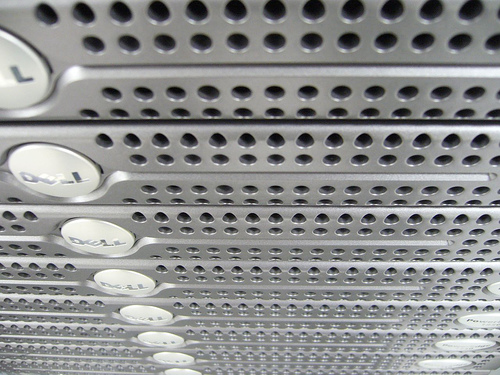James Fallows has a gracious reply to my earlier post on his Atlantic cover story. This is the gist:
The basic framing of the article is the same as that of most articles I do, namely: here’s something I think most people don’t know, and whose importance I’ll try to explain. In my experience, “most people” who take climate issues seriously assume that coal is unambiguously the enemy. What I’d learned over these past years in China convinced me that coal is an enemy but an unavoidable one, and that while working on every other front we’ll be better off if we try to clean up coal too, rather than assuming it away.
Secure · Tax deductible · Takes 45 SecondsSecure · Tax deductible · Takes 45 Seconds
I’ll reiterate that the piece is supremely worth reading and succeeds at what it sets out to do, which is to explain what’s happening and show why it’s important. Would that more journalists were doing this kind of thing, and doing it so well!
The point of my initial response was just to challenge this notion: “most people who take climate issues seriously assume that coal is unambiguously the enemy.” Fallows traveled around China and the U.S. and talked to tons of people and they are all convinced that coal is here for the foreseeable future. In fact he couldn’t seem to find a single person to quote who doesn’t believe that! The overwhelming bias in U.S. politics is pro-coal; U.S. politicians, including the leaders of both parties and the president, have “clean coal” on the tips of their tongues. The IEA, the IPCC, and the U.N. are all four square behind cleaner coal, as is virtually every national government. Efforts to clean coal do not lack powerful institutional backing.
In my experience, while there may be people who think coal can be eliminated quickly, there are virtually none in positions of any power. Far from being hegemons in this debate, they are a marginal minority. That’s why I wonder at all the time and energy spent — not even so much by Fallows as by many others — trying to convince them to accept coal.
Anyway, moving on, here are thoughts about another aspect of Fallows’ piece:
——
Fallows finds that the Chinese are sprinting ahead of the U.S. in advanced coal research, for a fairly simple reason: They build lots more power plants. Unlike smart phones and TVs, power plant technology does not often make qualitative leaps forward. The technology is still roughly what it was a century ago — fuel is burned, water is boiled, steam turns a turbine. It’s all about incremental advances, which are mainly captured through experience, i.e., learning by doing. China builds more so they learn more.
In the search for “progress on coal,” like other forms of energy research and development, China is now the Google, the Intel, the General Motors and Ford of their heyday—the place where the doing occurs, and thus the learning by doing as well. “They are doing so much so fast that their learning curve is at an inflection that simply could not be matched in the United States,” David Mohler of Duke Energy told me.
“In America, it takes a decade to get a permit for a plant,” a U.S. government official who works in China said. “Here, they build the whole thing in 21 months. …
“You can think of China as a huge laboratory for deploying technology,” the official added.
Fallows responds to this state of affairs with something like frustrated resignation. “They can afford to build, and Americans can hope to watch and learn.” This, it seems, is to be our role in the clean energy future: looking over Chinese shoulders, chipping in the occasional idea.
But that uninspiring conclusion only follows if we restrict our gaze to large-scale power generation. It’s unlikely the U.S. will take the lead in energy technologies where advances come through deployment of massive increments of capital. For one thing, our power demands aren’t ever going to rise like China’s again, so we’ll never need plants at that number or scale. For another, federal politics have become congenitally myopic and dysfunctional; the U.S. seems to have no appetite or capacity for mega-investments any more. It’s hard to get big things done here.
Regardless, industrial gigantism is not what we’re good at, not any more. These days we’re good in areas where private entrepreneurship and innovation are prized, iterations are continuous, and markets are dynamic — consumer-focused stuff like services, software, and information technology.
It turns out those talents are eminently applicable to the energy challenge. Specifically, the cluster of practices and technologies known loosely as “distributed energy” (DE) plays directly to American strengths. DE involves community-scale production and storage of energy, everything from solar panels and electric-car batteries to local biomass or cogen plants and utility-scale storage devices. It involves energy-intelligent, networked buildings, appliances, and devices. It involves smart grids and microgrids to manage generation, storage, and use for maximum efficiency. Wonks used to call the vision here an “enernet,” meant to be to electricity what the internet is to information, a platform that enables rapid innovation.
The advantages of DE are that it comes in cheap increments, it’s fast to build, it can bypass federal paralysis, it’s often locally owned, barriers to entry and exit are fairly low, it’s labor (as opposed to capital) intensive so it creates lots of jobs, and iterations and innovations come quickly. It draws on Americans’ native entrepreneurship and adventurousness. It’s a more dynamic, democratic, and resilient vision than the current wasteful regime of remote plants, long wires, and dumb consumption.
Now, Fallows and his sources have decided that no combination of renewables and intelligent management can satisfy the world’s energy needs. For my own part, I wonder why we’re so eager to answer that question in advance, before we’ve even really tried at all. Who knows what we’ll prove able to do if we set ourselves to the task? Why not get started and see what works before predicting our limits? Regardless, say they’re right and The World Needs Coal for the time being. Surely we can still agree that, if aggressive progress is needed on coal power plants, aggressive progress is also needed on community-scale energy and efficiency.
China seems to have the mega-giganto central power plant thing covered. It turns out a country where political power is centralized is good at developing centralized power. That’s fine and dandy — we too will benefit from the knowledge they gain.
But America is a free market democracy in which every citizen bears power and responsibility. Our constitutional system of government was designed to prevent undue concentrations of power. Our bonds are to each other, our families, our communities, not to distant kings, dictators, or power company executives. On energy, perhaps we could pursue a more egalitarian path.
These days the American Dream seems a touch haggard. We’ve become an anxious, ill-tempered nation of grievance-peddlers, drunk on fairy tales, waiting for someone else to solve our problems. Among other infantalizing features of modern American life is the fact that we are passive, thoughtless consumers of energy, forever suckling at a far-away teat, whether it’s foreign oil producers or politically connected corporate behemoths. We send money out of our communities; someone sends power in. We are as dependent as sheep.
One step toward regaining our sense of civic engagement and self-determination would be to widely distribute the means of making and managing energy, to empower
bottom-up rather than top-down innovation. Our communities can never truly govern themselves if they have no control over their own power. Let China have the Three Gorges Dam. Let’s show the world, again, that democracy can work.




